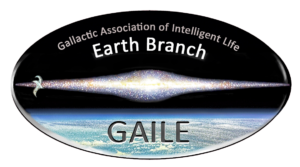GAILE EXOPLANETS AVAILABLE FOR SETTLEMENT
EXOPLANETS SIMILAR TO EARTH

Wyzdom — Because it was the first exoplanet settled by humans, Wyzdom is the most populous and technologically advanced. You are more likely to find work in your chosen field and a wider variety of cities in which to live than on more recently developed exoplanets. The disadvantage of life on Wyzdom is that gravity is 27% higher than on earth, and because the atmosphere is denser, wind forces can be severe.

Poseidous — This exoplanet is the only one with no continental land masses, only one single ocean filled with islands. The islands have given rise to a diverse range of cultures with no planet-wide governmental authority. Island governments range from anarcho-libertarian to Maoist-socialist. Because land is limited and the population has a wide range of skills, Poseidous accepts somewhat fewer immigrants than other exoplanets.

Brobdingnag — Settlers co-exist with large animals resembling Earth’s dinosaurs and pterosaurs. Life with these magnificent creatures is not without risks, but the excitement of seeing and interacting with them is irresistible to some people. If you ever yearned for a season pass to Jurassic Park, this may be the planet for you.

Genesis — When discovered, this exoplanet had a breathable atmosphere and plenty of rainfall and fresh water. However, it had no indigenous life on land and only primitive sea life. For more than 90 years, portions of the land area have been terraformed. Settlers have brought a large number of domesticated birds, mammals, fish, and plant life from earth, and the areas where they live resemble enormous gardens more than natural landscapes. Genesis attracts settlers in the biological sciences who want to shape life according to their visions. When terraforming is complete, about seven centuries in the future, Genesis is likely to become the most Earth-like of the exoplanets.

Mammon — Driest of the exoplanets, Mammon is rich in exotic minerals important for power-generation and space propulsion. Consequently it offers the greatest opportunity to make a lot of money. Most settlers enjoy luxurious lifestyles aided by high levels of technology and automation that rival those of the richest people on Earth. But much of the planet’s natural landscape is harsh desert and the number of people it is capable of supporting is likely to be limited compared to Earth.

Yom — This exoplanet has the most unusual life forms. Animals have three planes of symmetry rather than one. Plants employ a form of red, orange, or yellow chlorophyll that makes the landscape appear autumnal year-round. To preserve this unique environment, settlers have not brought other terrestrial animals to the planet and have learned to live in harmony with Trups, the most advanced of the tri-symmetrical creatures. Yom is among the least industrially developed of the settlements with a planetary human population of just 830,000 and only two cities. At nearly 27 earth hours, its day is longer than that of all but one of the settled exoplanets.

Romulus — This planet in the only twin-world system settled by humans has the smallest population, only 440,000. The other planet, named Remus, is inhabited by humanoids with technology and social structures comparable to Earth’s in the Middle Ages. The major “industry” of Romulus is the study of the history and anthropology of its twin, although opportunities abound for jobs in support industries from information systems to agriculture, power generation, and construction. At nearly 44 hours, Romulus’s day is the longest of any exoplanet colony. At 0.87 g, the gravitational field is mild.

Athena — The most Earth-like exoplanet yet discovered is scheduled to be settled in 2380 cetc. Pioneers selected for this planet face greater challenges that those on any other settlements. Much remains to be learned about agriculture, indigenous life forms, and diseases. Industries must be created from scratch. Difficulties notwithstanding, demand for berths on the first settler transport to Athena remain high because it offers the chance to create a new Earth on a clean slate and do it right.
A note about travel times: Even though the most distant of the exoplanet settlements is 18 times farther from Earth than the closest, travel times don’t vary much. Using 24th century technology, emigrants to the closest exoplanet, Wyzdom, feel as if the trip lasts 59 days, while travelers to the most distant, Athena, would perceive that trip to last 79 days. For details see the Physics of Space Travel section on GAILEarth.com.
